Michal Uricar
Pseudo-Label Ensemble-based Semi-supervised Learning for Handling Noisy Soiling Segmentation Annotations
May 17, 2021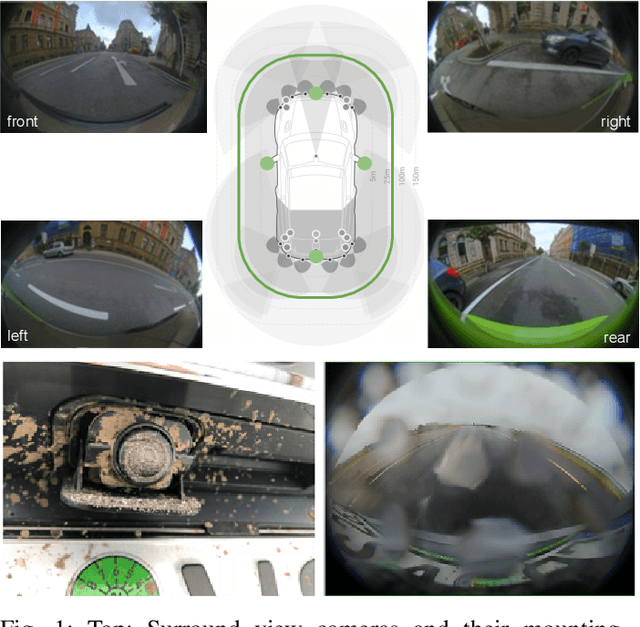
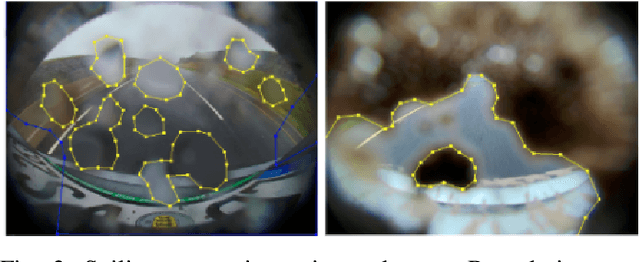

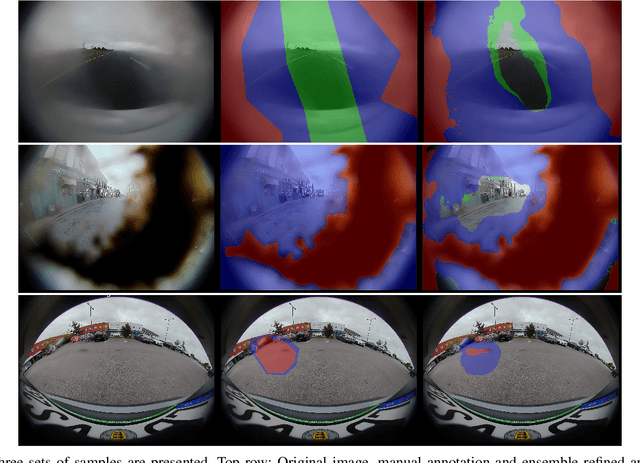
Abstract:Manual annotation of soiling on surround view cameras is a very challenging and expensive task. The unclear boundary for various soiling categories like water drops or mud particles usually results in a large variance in the annotation quality. As a result, the models trained on such poorly annotated data are far from being optimal. In this paper, we focus on handling such noisy annotations via pseudo-label driven ensemble model which allow us to quickly spot problematic annotations and in most cases also sufficiently fixing them. We train a soiling segmentation model on both noisy and refined labels and demonstrate significant improvements using the refined annotations. It also illustrates that it is possible to effectively refine lower cost coarse annotations.
TiledSoilingNet: Tile-level Soiling Detection on Automotive Surround-view Cameras Using Coverage Metric
Jul 01, 2020
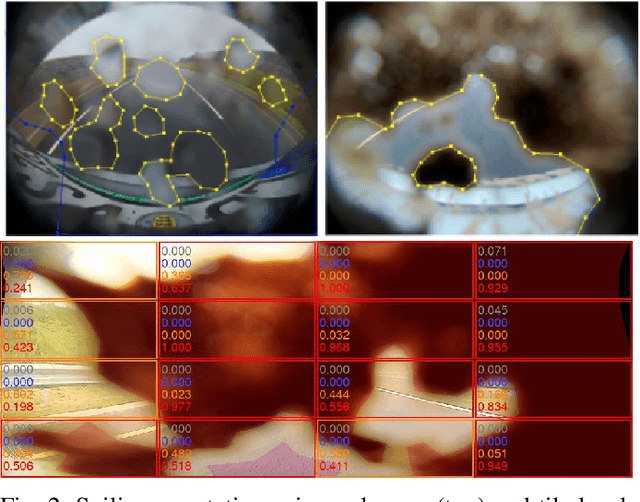
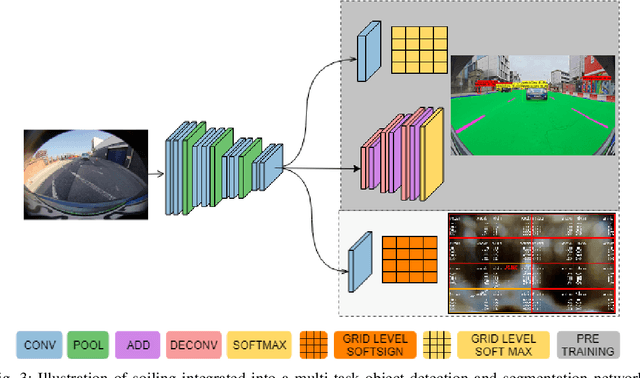
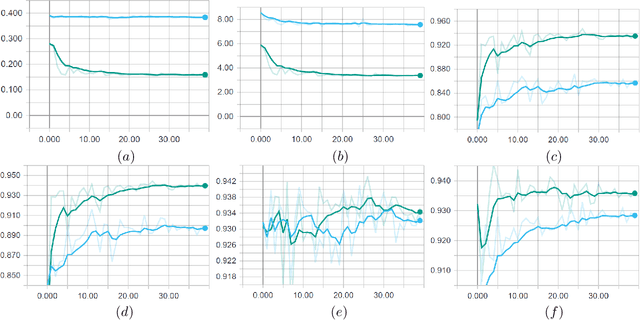
Abstract:Automotive cameras, particularly surround-view cameras, tend to get soiled by mud, water, snow, etc. For higher levels of autonomous driving, it is necessary to have a soiling detection algorithm which will trigger an automatic cleaning system. Localized detection of soiling in an image is necessary to control the cleaning system. It is also necessary to enable partial functionality in unsoiled areas while reducing confidence in soiled areas. Although this can be solved using a semantic segmentation task, we explore a more efficient solution targeting deployment in low power embedded system. We propose a novel method to regress the area of each soiling type within a tile directly. We refer to this as coverage. The proposed approach is better than learning the dominant class in a tile as multiple soiling types occur within a tile commonly. It also has the advantage of dealing with coarse polygon annotation, which will cause the segmentation task. The proposed soiling coverage decoder is an order of magnitude faster than an equivalent segmentation decoder. We also integrated it into an object detection and semantic segmentation multi-task model using an asynchronous back-propagation algorithm. A portion of the dataset used will be released publicly as part of our WoodScape dataset to encourage further research.
FisheyeMultiNet: Real-time Multi-task Learning Architecture for Surround-view Automated Parking System
Dec 23, 2019
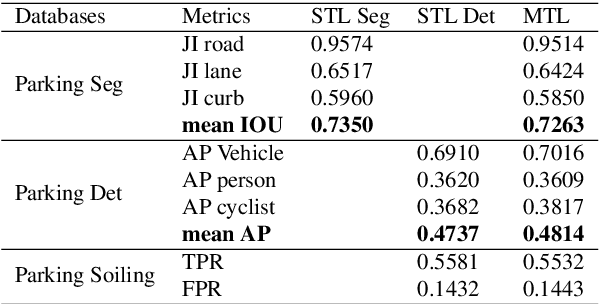

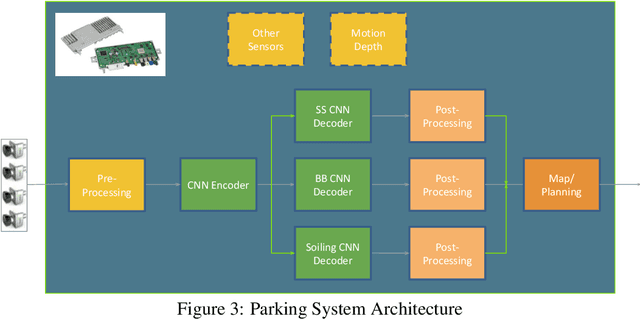
Abstract:Automated Parking is a low speed manoeuvring scenario which is quite unstructured and complex, requiring full 360{\deg} near-field sensing around the vehicle. In this paper, we discuss the design and implementation of an automated parking system from the perspective of camera based deep learning algorithms. We provide a holistic overview of an industrial system covering the embedded system, use cases and the deep learning architecture. We demonstrate a real-time multi-task deep learning network called FisheyeMultiNet, which detects all the necessary objects for parking on a low-power embedded system. FisheyeMultiNet runs at 15 fps for 4 cameras and it has three tasks namely object detection, semantic segmentation and soiling detection. To encourage further research, we release a partial dataset of 5,000 images containing semantic segmentation and bounding box detection ground truth via WoodScape project \cite{yogamani2019woodscape}.
Let's Get Dirty: GAN Based Data Augmentation for Soiling and Adverse Weather Classification in Autonomous Driving
Dec 04, 2019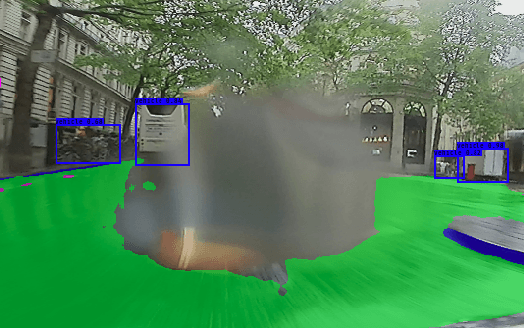

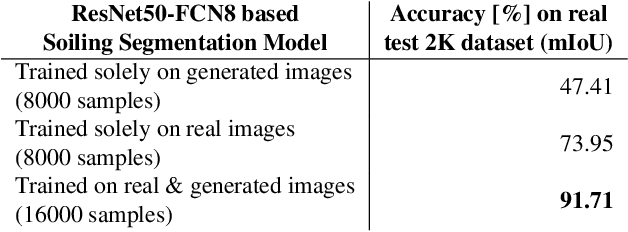

Abstract:Cameras are getting more and more important in autonomous driving. Wide-angle fisheye cameras are relatively cheap sensors and very suitable for automated parking and low-speed navigation tasks. Four of such cameras form a surround-view system that provides a complete and detailed view around the vehicle. These cameras are usually directly exposed to harsh environmental settings and therefore can get soiled very easily by mud, dust, water, frost, etc. The soiling on the camera lens has a direct impact on the further processing of the images they provide. While adverse weather conditions, such as rain, are getting attention recently, there is limited work on lens soiling. We believe that one of the reasons is that it is difficult to build a diverse dataset for this task, which is moreover expensive to annotate. We propose a novel GAN based algorithm for generating artificial soiling data along with the corresponding annotation masks. The manually annotated soiling dataset and the generated augmentation dataset will be made public. We demonstrate the generalization of our fisheye trained soiling GAN model on the Cityscapes dataset. Additionally, we provide an empirical evaluation of the degradation of the semantic segmentation algorithm with the soiled data.
SoilingNet: Soiling Detection on Automotive Surround-View Cameras
May 04, 2019
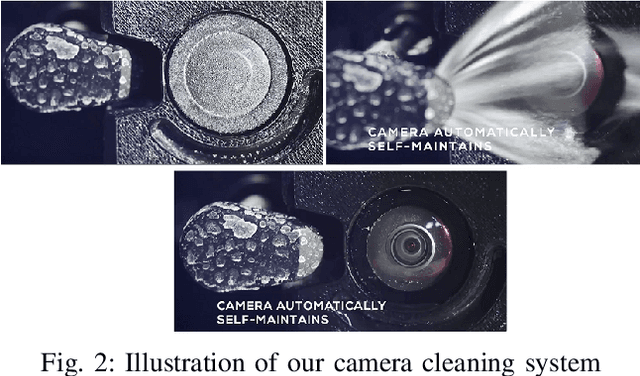
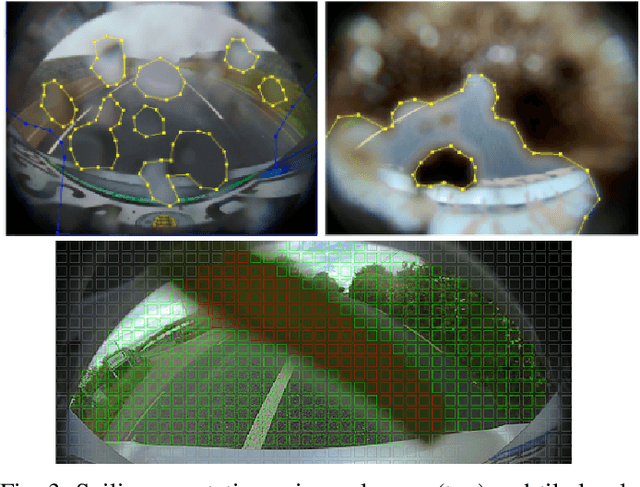
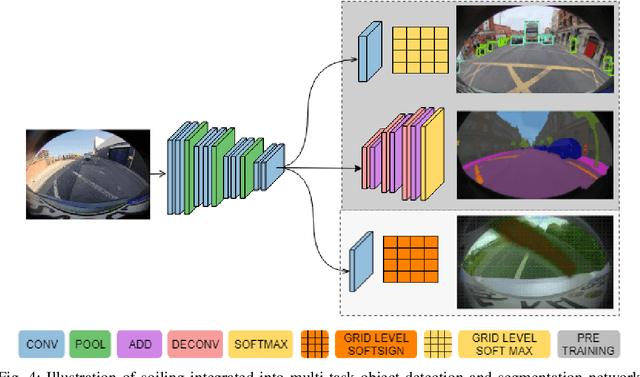
Abstract:Cameras are an essential part of sensor suite in autonomous driving. Surround-view cameras are directly exposed to external environment and are vulnerable to get soiled. Cameras have a much higher degradation in performance due to soiling compared to other sensors. Thus it is critical to accurately detect soiling on the cameras, particularly for higher levels of autonomous driving. We created a new dataset having multiple types of soiling namely opaque and transparent. As there is no public dataset available for this task, we will release a public dataset to encourage further research. We demonstrate high accuracy using a Convolutional Neural Network (CNN) based architecture. We also show that it can be combined with the existing object detection task in a multi-task learning framework. Finally, we make use of Generative Adversarial Networks (GANs) to generate more images for data augmentation and show that it works successfully similar to the style transfer.
WoodScape: A multi-task, multi-camera fisheye dataset for autonomous driving
May 04, 2019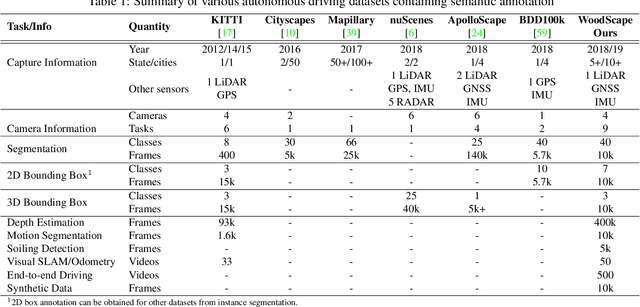
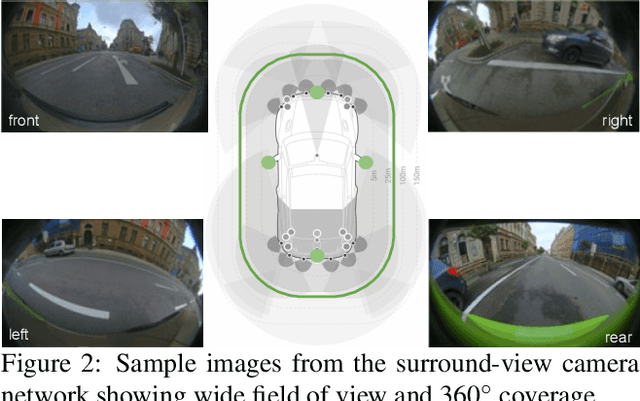
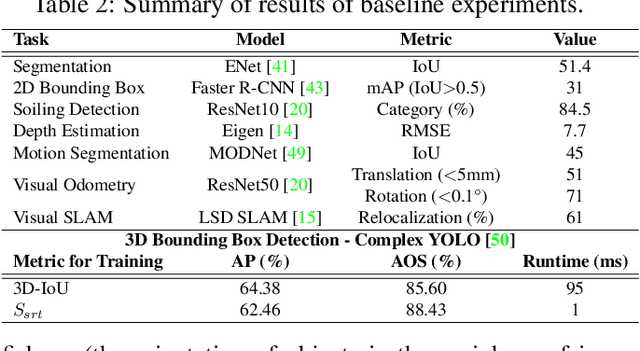
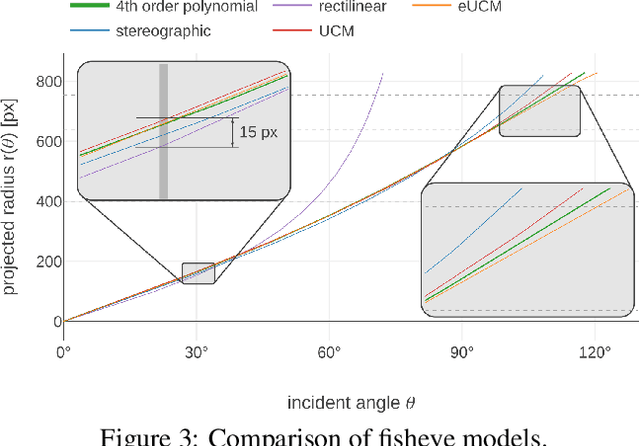
Abstract:Fisheye cameras are commonly employed for obtaining a large field of view in surveillance, augmented reality and in particular automotive applications. In spite of its prevalence, there are few public datasets for detailed evaluation of computer vision algorithms on fisheye images. We release the first extensive fisheye automotive dataset, WoodScape, named after Robert Wood who invented the fisheye camera in 1906. WoodScape comprises of four surround view cameras and nine tasks including segmentation, depth estimation, 3D bounding box detection and soiling detection. Semantic annotation of 40 classes at the instance level is provided for over 10,000 images and annotation for other tasks are provided for over 100,000 images. We would like to encourage the community to adapt computer vision models for fisheye camera instead of naive rectification.
Yes, we GAN: Applying Adversarial Techniques for Autonomous Driving
Feb 09, 2019
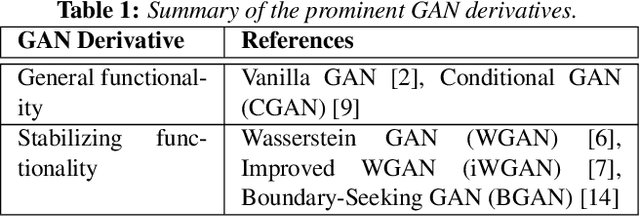
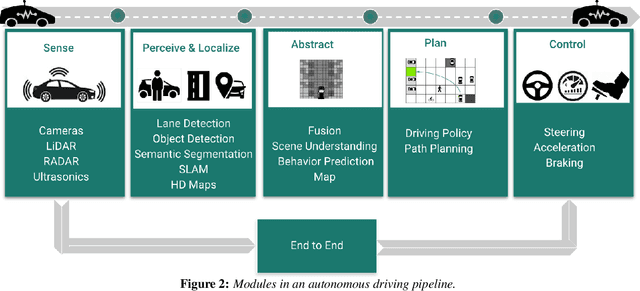
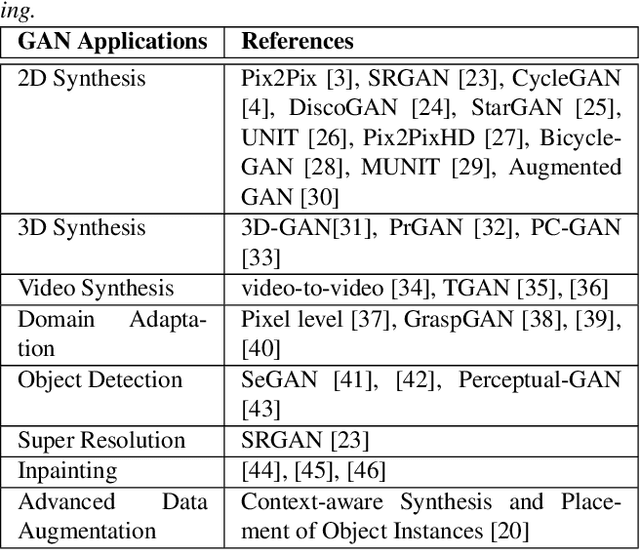
Abstract:Generative Adversarial Networks (GAN) have gained a lot of popularity from their introduction in 2014 till present. Research on GAN is rapidly growing and there are many variants of the original GAN focusing on various aspects of deep learning. GAN are perceived as the most impactful direction of machine learning in the last decade. This paper focuses on the application of GAN in autonomous driving including topics such as advanced data augmentation, loss function learning, semi-supervised learning, etc. We formalize and review key applications of adversarial techniques and discuss challenges and open problems to be addressed.
Challenges in Designing Datasets and Validation for Autonomous Driving
Jan 26, 2019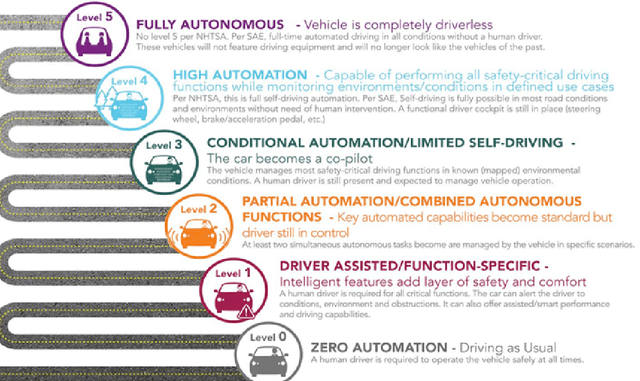

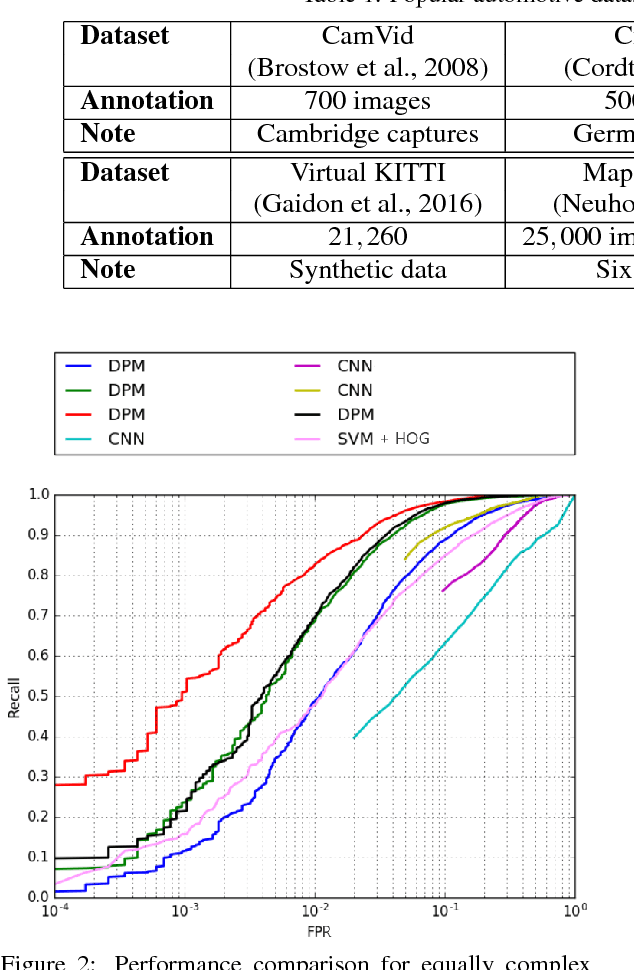

Abstract:Autonomous driving is getting a lot of attention in the last decade and will be the hot topic at least until the first successful certification of a car with Level 5 autonomy. There are many public datasets in the academic community. However, they are far away from what a robust industrial production system needs. There is a large gap between academic and industrial setting and a substantial way from a research prototype, built on public datasets, to a deployable solution which is a challenging task. In this paper, we focus on bad practices that often happen in the autonomous driving from an industrial deployment perspective. Data design deserves at least the same amount of attention as the model design. There is very little attention paid to these issues in the scientific community, and we hope this paper encourages better formalization of dataset design. More specifically, we focus on the datasets design and validation scheme for autonomous driving, where we would like to highlight the common problems, wrong assumptions, and steps towards avoiding them, as well as some open problems.
 Add to Chrome
Add to Chrome Add to Firefox
Add to Firefox Add to Edge
Add to Edge